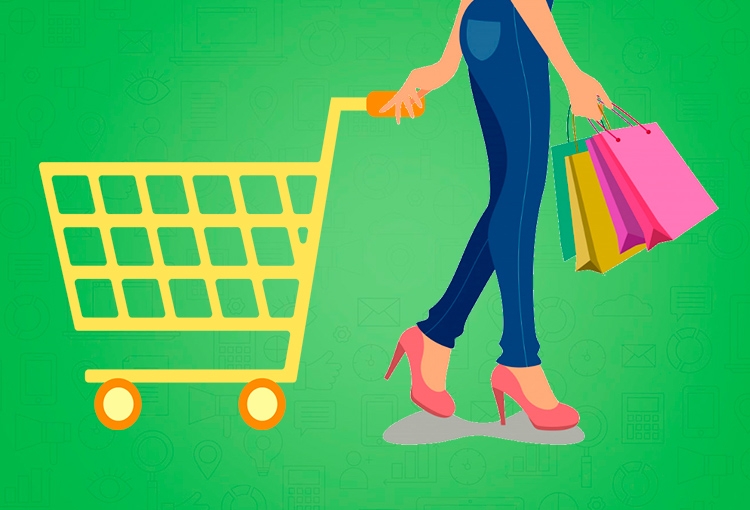The Evolution of Shopping: From Brick-and-Mortar to Click-and-Order

The Evolution of Shopping: From Brick-and-Mortar to Click-and-Order
Shopping, once a simple transactional activity, has undergone a remarkable transformation in recent decades, propelled by technological advancements and shifting consumer preferences. From the bustling aisles of brick-and-mortar stores to the convenience of online platforms, the journey of shopping has evolved, reshaping the retail landscape and revolutionizing the way we acquire goods and services. In this article, we explore the multifaceted facets of shopping, tracing its evolution and examining its impact on consumer behavior and the retail industry at large.
The Rise of E-Commerce:
The advent of the internet paved the way for a paradigm shift in shopping behavior, giving rise to the phenomenon of e-commerce. Online marketplaces such as Amazon, eBay, and Alibaba emerged as digital behemoths, offering consumers a vast array of products at their fingertips. The allure of convenience, accessibility, and often competitive pricing propelled the rapid growth of e-commerce, transforming the way people shop for everything from groceries to electronics.
Convenience and Choice:
One of the primary drivers behind the popularity of online shopping is convenience. With just a few clicks or taps, consumers can browse through thousands of products, compare prices, read reviews, and make purchases from the comfort of their homes or on the go. Moreover, the proliferation of mobile devices has further streamlined the shopping experience, allowing users to shop anytime, anywhere, with unprecedented ease.
Beyond convenience, e-commerce offers unparalleled choice and variety. Online retailers can stock an extensive range of products without the constraints of physical space, catering to diverse tastes and preferences. Whether seeking niche items or mainstream goods, consumers can find virtually anything online, expanding their options beyond what traditional brick-and-mortar stores can offer.
Personalization and Recommendations:
In the digital realm, data reigns supreme, and e-commerce platforms leverage this wealth of information to personalize the shopping experience. Through algorithms and machine learning, platforms analyze user behavior, purchase history, and preferences to deliver targeted recommendations and personalized offers. From curated product suggestions to tailored promotions, these personalized experiences enhance customer satisfaction and drive repeat business.
Challenges and Opportunities:
Despite its undeniable benefits, e-commerce also presents challenges for retailers, particularly smaller businesses and traditional brick-and-mortar stores. The rise of online shopping has led to intensified competition and pricing pressures, forcing retailers to adapt or risk obsolescence. Moreover, concerns regarding data privacy, cybersecurity, and the environmental impact of shipping and packaging continue to be subjects of scrutiny and debate.
However, amidst these challenges lie opportunities for innovation and adaptation. Forward-thinking retailers are embracing omnichannel strategies, integrating online and offline channels to provide seamless shopping experiences across multiple touchpoints. Additionally, technologies such as augmented reality (AR) and virtual reality (VR) are redefining the concept of "try before you buy," allowing consumers to visualize products in their physical spaces before making a purchase.
The Future of Shopping:
As we look ahead, the future of shopping promises to be dynamic and ever-evolving. The boundaries between online and offline commerce will continue to blur, giving rise to hybrid shopping experiences that combine the best of both worlds. Furthermore, emerging technologies such as blockchain and decentralized finance (DeFi) hold the potential to revolutionize payment systems and supply chain management, further reshaping the retail landscape.
In conclusion, shopping has transcended its traditional boundaries, evolving into a diverse and multifaceted experience that encompasses both physical and digital realms. From the convenience of online platforms to the sensory immersion of brick-and-mortar stores, consumers today have more choices and options than ever before. As technology continues to advance and consumer preferences evolve, the future of shopping remains ripe with possibilities, waiting to be explored and embraced.
- Arts
- Business
- Computers
- Spellen
- Health
- Home
- Kids and Teens
- Money
- News
- Recreation
- Reference
- Regional
- Science
- Shopping
- Society
- Sports
- Бизнес
- Деньги
- Дом
- Досуг
- Здоровье
- Игры
- Искусство
- Источники информации
- Компьютеры
- Наука
- Новости и СМИ
- Общество
- Покупки
- Спорт
- Страны и регионы
- World


